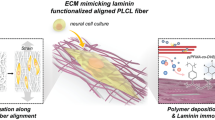Abstract
The use of regenerated silk fiber is limited due to its inferior mechanical properties in spite of high potential in a wide variety of applications. Many studies have been conducted in order to improve the mechanical properties of the regenerated silk materials, but no one has so far suggested an obvious solution. Meanwhile, some reports showed evidence that structural development of silk protein can be manipulated by physical interactions between silk fibroin (SF) and silk sericin (SS) during the regeneration process, especially in recrystallization process of SF. Such a hypothesis suggests a promising clue to enhance the mechanical properties of silk-based materials. Therefore, in this study, we tried to elucidate how SS can promote developing the molecular chain orientation of SF, resulting in an improvement of mechanical properties of regenerated silk fiber during spinning process. The tensile properties of the regenerated silk fiber were significantly improved compared to those of pure SF fiber when a proper amount of SS was blend with SF; both tenacity and breaking elongation increased by approximately 30 % and 70 % at three fold draw ratio, respectively. Quantitative analysis of X-ray diffraction and Herman’s orientation coefficient confirmed that such an improvement of tensile property was mainly caused by an increase of molecular orientation induced by sericin during the drawing process.
Similar content being viewed by others
References
C. S. Ki, K. H. Lee, D. H. Baek, M. Hattori, I. C. Um, D. W. Ihm, and Y. H. Park, J. Appl. Polym. Sci., 105, 1605 (2007).
I. C. Um, C. S. Ki, H. Y. Kweon, K. G. Lee, D. W. Ihm, and Y. H. Park, Int. J. Biol. Macromol., 34, 107 (2004).
K. H. Lee, D. H. Baek, C. S. Ki, and Y. H. Park, Int. J. Biol. Macromol., 41, 168 (2007).
T. Scheibel, Curr. Opin. Biotechnol., 16, 427 (2005).
E. Marsano, P. Corsini, C. Arosio, A. Boschi, M. Mormino, and G. Freddi, Int. J. Biol. Macromol., 37, 179 (2005).
K. Matsumoto, H. Uejima, T. Iwasaki, Y. Sano, and H. Sumino, J. Appl. Polym. Sci., 60, 503 (1996).
C. S. Ki and Y. H. Park, Macromol. Res., 17, 935 (2009).
I. C. Um, H. Y. Kweon, K. G. Lee, and Y. H. Park, Int. J. Biol. Macromol., 33, 203 (2003).
K. Ohgo, F. Bagusat, T. Asakura, and U. Scheler, J. Am. Chem. Soc., 130, 4182 (2008).
S. W. Ha, H. S. Gracz. A. E. Tonelli, and S. M. Hudson, Biomacromolecules, 6, 2563 (2005).
S. Sohn, H. H. Strey, and S. P. Gido, Biomacromolecules, 5, 751 (2004).
C. S. Ki, I. C. Um, and Y. H. Park, Polymer, 50, 4618 (2009).
K. H. Lee, Macromol. Rapid Commun., 25, 1792 (2004).
C. S. Ki, J. W. Kim, H. J. Oh, K. H. Lee, and Y. H. Park, Int. J. Biol. Macromol., 41, 346 (2007).
H. J. Jin and D. L. Kaplan, Nature, 424, 1057 (2003).
S. Ran, D. Fang, X. Zong, B. S. Hsiao, B. Chu, and P. M. Cunniff, Polymer, 42, 1601 (2001).
L. F. Drummy, B. L. Farmer, and R. R. Naik, Soft Matter, 3, 877 (2007).
Y. Takahashi, M. Gehoh, and K. Yuzuriha, Int. J. Biol. Macromol., 24, 127 (1999).
Y. Shen, M. A. Johnson, and D. C. Martin, Macromolecules, 31, 8857 (1998).
M. Rossle, P. Panine, V. S. Urban, and C. Riekel, Biopolymers, 74, 316 (2004).
Author information
Authors and Affiliations
Corresponding author
Rights and permissions
About this article
Cite this article
Ki, C.S., Park, Y.H. Effect of sericin blending on molecular orientation of regenerated silk fiber. Fibers Polym 14, 1460–1467 (2013). https://doi.org/10.1007/s12221-013-1460-1
Received:
Revised:
Accepted:
Published:
Issue Date:
DOI: https://doi.org/10.1007/s12221-013-1460-1




